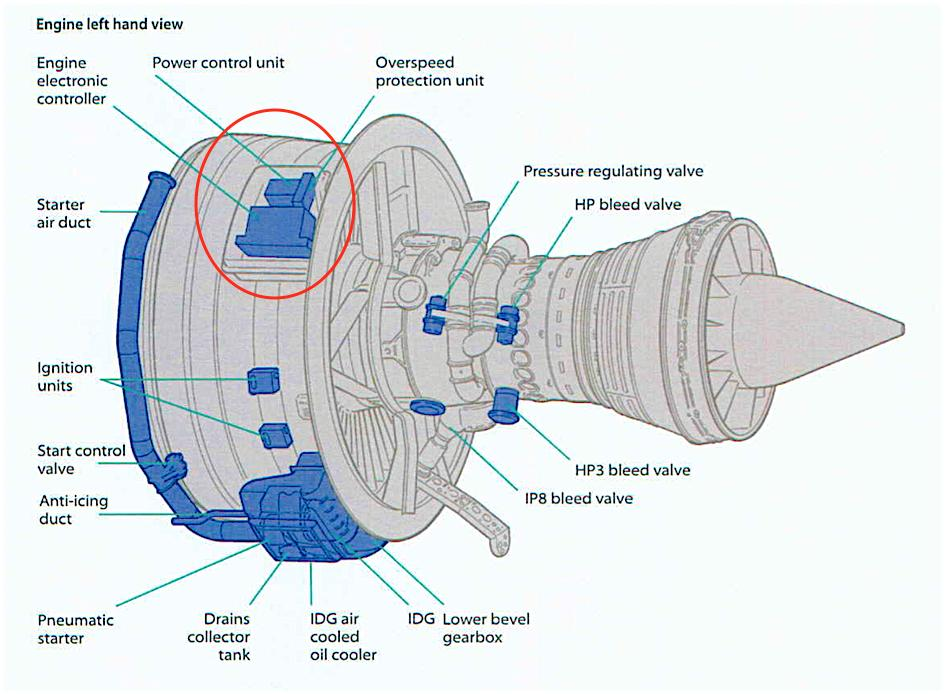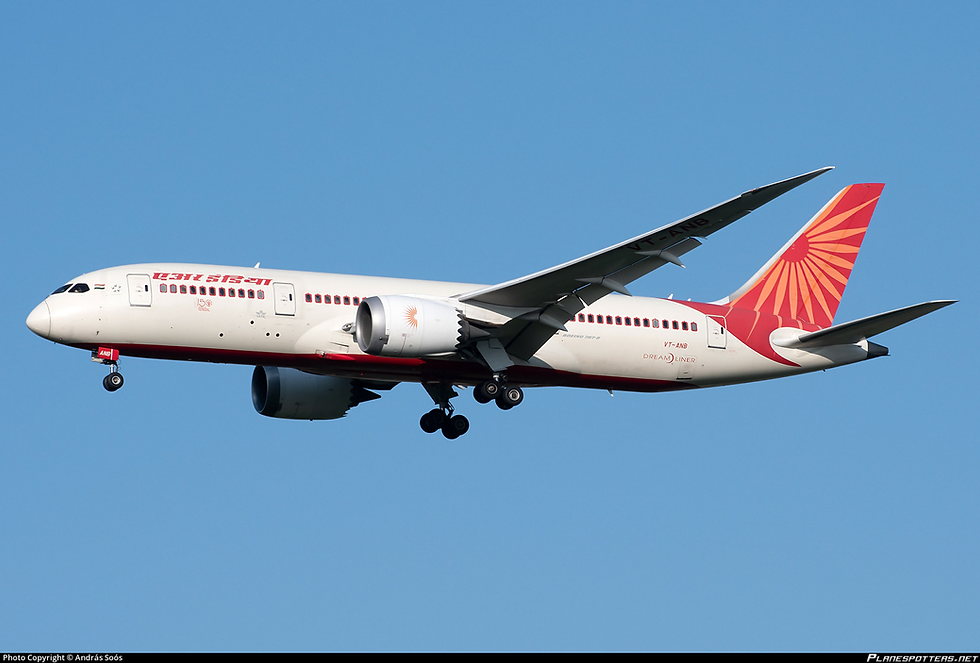[AI171] Opinion: The shameful desecration of Aviation's hallowed ground.
- Prashant Kavi (PK)

- Jul 18
- 6 min read
Updated: Jul 27

An air-crash investigation isn’t just a procedural necessity—it’s a deeply consequential exercise in truth-finding, setting accountability and propounding remedial actions. In many ways, it’s hallowed ground for aviation safety, because of the solemn and reverent approach taken in investigating aircraft accidents.
It’s a sobering thought, but in aviation, safety improvements more often than not, emerge from a tragedy. Over the decades, this sacrosanct cycle of investigation with the aim of prevention and reform, has built one of the most robust safety cultures in any industry.
Deplorably though, in the aftermath of the AAIB’s (Aircraft Accident Investigation board of India) release of a preliminary report in respect of the AI171 accident, that sacred ground is being shamelessly trampled upon!
Expectedly, the preliminary report has unleashed a tsunami of discussions, debates and discourse on mainstream and social media, but regrettably, most of it being illogical and/or insensitive.
The Preliminary Report
Report contents leaked prior to official release: The much-anticipated report was released in the intervening hours of July 11 and 12 (IST) by the AAIB and created an immediate furor since the probable cause of the accident had already been in discussion in some parts of the Western media, at least a couple of days prior.
Notably, The Wall Street Journal already had the most significant finding published in blatant contravention of journalistic ethics, since critical information was selectively and surreptitiously (no sources or any authority named) obtained and published ahead of the official release of the report. So much so for TWSJ’s stated Newsroom Standards & Ethics: “We strive to be a model for ethical, fact-based, ambitious news reporting. Our journalists are committed to the most ethical conduct in pursuing our work and aim to uphold the legacy of integrity above reproach, including adherence to the Dow Jones Code of Conduct.”
Clearly, ambition got the better of TWSJ’s integrity and ethics on this one!
Delay in release, inaccuracies and veracity of the report: there was a clamor in various quarters over the inordinate delay in releasing the preliminary report and accompanying insinuations on everything from subterfuge to incompetence, besides questions on the veracity of the report after it was published – given that it was ‘unsigned’.
The fact is, that according to the ICAO mandate (Annex 13), a preliminary report is to be submitted within 30-days of the accident and which was achieved. Besides, I believe there also needs to be an appreciation of the amount of work involved in the backend, given the scale of the accident and the scope of the investigation involving a wide-body airliner with complete hull loss and a significant number of fatalities.
The report has been criticized for a glaring inaccuracy viz. the incorrect expansion of an important technical term in the context i.e. FADEC, which is mentioned as “full authority dual engine control” in the report when it is actually, ‘Full Authority Digital Engine Control’. This error was latched on to by some Pilot federations into suggesting that this was indicative of ineptitude of the investigative team and the result of not having a pilot as part of it!
The credibility of the report was also questioned given the absence of a signature. But to my knowledge a preliminary report such as this does not require to be signed. In fact, the ICAO Annex 13 also states that, "Preliminary Reports may be marked as confidential or remain public at the investigating State’s discretion."! So in essence, the AAIB and therefore India would have been well within its rights to have refrained from publicly revealing the preliminary findings.
Incomplete report, indirectly blames the air crew and raises more questions than it answers: There are questions being raised over the absence of the CVR transcript among others and the ambiguity created by the subtle mention of the purported flight-deck conversation
between the two pilots, where one (unattributed) is questioning the other about the critical action of the Fuel Cut-off Switches being moved to 'cut-off' position from 'run' and why!
Admittedly, the preliminary report could have either included the complete CVR transcript or no mention at all of any conversations so as to inhibit misinterpretations. This is assuming the recordings had been downloaded and analyzed in their entirety, because a statement towards the end of the report clearly states that, "The EAFR data downloaded from forward EAFR is being analyzed in detail."
As is inevitable for such multidisciplinary and multinational accident investigations, the selection of 'what to say' and 'how much to say' in a preliminary report, often becomes a matter of debate, negotiation and compromise. Is it possible that the insertion of this unattributed and paraphrased bits of the cockpit conversation was at the insistence of the OEMs to deflect any immediate blame away from the Aircraft/Engines?

In fact, the biggest discussion on the report currently centers around this purported conversation and when combined with the established fact that the Fuel Cut-off Switches can not be moved accidentally but only deliberately, lends weight to the theory of a deliberate pilot action. Although, the report carefully chooses the word 'transition', when reporting the movement of the switches as recorded by the FDR, adding to the ambiguity!
And while the report does debunk some of the more outrageous theories in circulation, in the immediate aftermath of the crash, it does indeed raise more questions on the causative factor/s of the crash. But then, if one were to go by the foreword, the opening statement of which clearly states, "This document has been prepared based on the preliminary facts and evidence collected during the investigation. The information is preliminary and subject to change." Add to which the footnote right at the end of the report, "Investigation is continuing and the investigation team will review and examine additional evidence, records and information that is being sought from the stakeholders."; strictly speaking therefore, the report can be criticized but can't be faulted on any ground whatsoever.
The scourge of the self-styled aviation 'expert'
"Without freedom of speech, we would not know who the idiots are!"
The release of the preliminary report on the AI171 crash, has also worryingly witnessed a upsurge in the breed of self-styled aviation 'experts', who, regardless of the suitability of their expertise, experience or credentials, are mindlessly doling out unrestrained 'expert' advice. Mainstream and social media are now flooded with passionate dissections of the preliminary report — few insightful, but most bordering on farce, pronouncing definitive judgments on everything from cockpit ergonomics to crew psychology, weaving convoluted theories totally disconnected from reality.
In a clear case of 'fools rush in where angels fear to tread', many of these impromptu pundits are treating the preliminary report like it were some fictional crime thriller to be reviewed. In a previous post [https://www.aviatheque.com/post/the-ai171-tragedy-and-the-parallel-one-playing-out-on-our-screens], AVIATHÈQUE had highlighted, how the mad rush to be seen and heard in the post-accident discourse, meant to honor truth and promote thoughtful reflection, was instead witnessing a secondary tragedy; the spectacle of misinformation, wild speculation and premature judgment.
The real story, yet to emerge from what should be an exhaustive and painstaking evidence-based analysis, is already being drowned out by a chorus of half-baked theories and rhetorical grandstanding. And sadly, some of the more sensible commentators are also wading into these murky waters. FOMO is it? This trend, fueled by algorithms that reward virality over veracity, is nothing short of blasphemy for such a sacred exercise!
Author's Note
Learning from this experience, it is hoped that the AAIB will exercise greater care and thought when releasing further accident investigation updates, so as to quell any ambiguity yet maintaining transparency. And it is also imperative, that sensible voices rise above this chaotic din, give these self-styled aviation experts, a moment of pause and demand a halt to the frenzy splashed across our screens. If we don’t speak up, this spectacle is bound to drag our industry into irreparable ridicule and potentially end up defiling this investigation.
Postscript
Just as this article was being prepped for publishing, there were more 'scoops' coming from The Wall Street Journal. The latest being made publicly available reads:
"A black-box recording of dialogue between the flight’s two pilots indicates it was the captain who turned off switches that controlled fuel flowing to the plane’s two engines, according to people familiar with US officials’ early assessment of evidence uncovered in the crash investigation."
"The first officer expressed surprise and then panicked, these people said, while the captain seemed to remain calm."
“The preliminary details have fueled the belief among some US officials that criminal authorities should review the matter, as would likely be the case if the crash had occurred on American soil, people familiar with the matter said.”
An email dated June 16, by the author addressed to the Chief Communications Officer of TWSJ, to question TWSJ journalistic ethics on this matter, was redirected to another address for a response - which was still awaited at the time of publishing this.







Comments